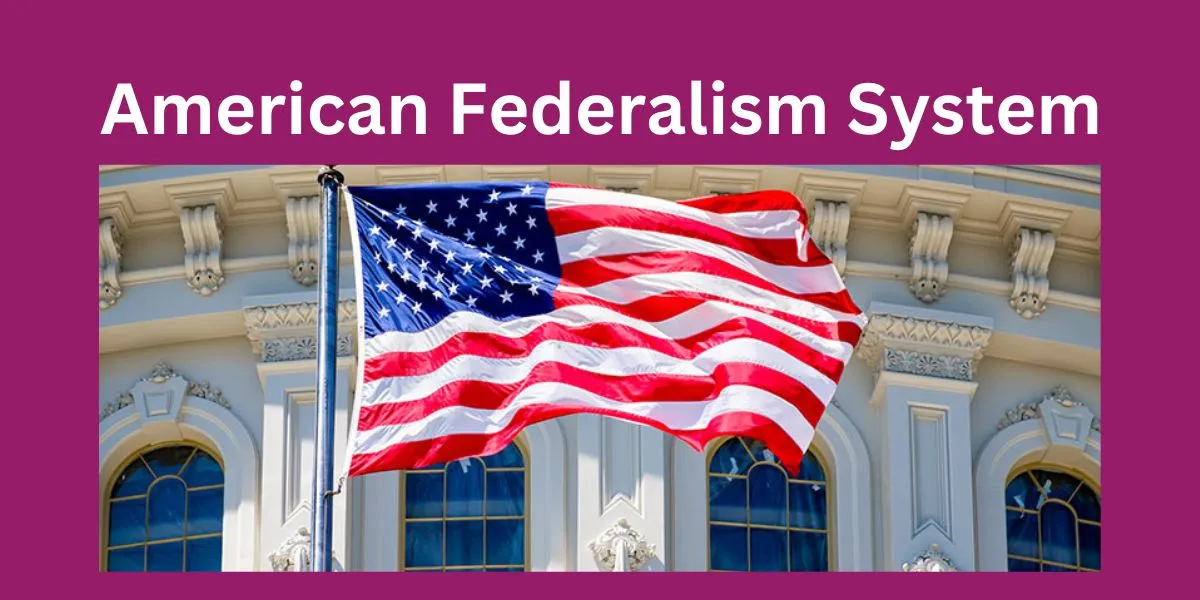When you hear the term “American federalism,” what comes to mind? States, the Constitution, or maybe those heated debates about who’s in charge of what? At its core, federalism is the backbone of how America runs, dividing power between the national and state governments. It’s like a dance (sometimes smooth, sometimes clumsy) between two partners trying to share control. But how did it all come to be, and why does it matter? Let’s dive in.
What Is the American Federalism System?
American federalism is a system of government where power is shared between a central authority (the federal government) and individual states. It’s a balancing act meant to ensure neither side has complete control—think of it as two halves of a whole.
The Basics of Federalism
- Federal Government: Handles big-picture issues like defense, foreign policy, and national laws.
- State Governments: Take care of local matters like education, healthcare, and law enforcement.
- Shared Powers: Things like taxation, transportation, and lawmaking often overlap between the two.
A Brief History of Federalism in America
The Founding Fathers’ Vision
The concept of federalism was baked into the Constitution. The Founding Fathers wanted a government that wasn’t too centralized (like the British monarchy they’d just escaped) but still strong enough to unite the states. The result? A “dual sovereignty” system, giving both federal and state governments their own spheres of authority.
The Constitution and Federalism
The Constitution is like the rulebook for federalism. Key parts include:
- The Supremacy Clause (Article VI): Federal laws trump state laws when there’s a conflict.
- The Tenth Amendment: Powers not given to the federal government are reserved for the states or the people.
Types of Federalism Over Time
Federalism isn’t a one-size-fits-all system. Over the years, it’s evolved based on political needs, social changes, and even crises.
Dual Federalism (1789–1930s)
Also called “layer cake” federalism, this era saw clear distinctions between federal and state powers. They operated like two separate layers of a cake, rarely overlapping.
Cooperative Federalism (1930s–1960s)
The Great Depression brought massive changes. During this “marble cake” phase, federal and state governments started working together to tackle issues like unemployment and infrastructure.
New Federalism (1970s–Present)
New Federalism emphasizes giving power back to the states. Presidents like Nixon and Reagan pushed for this approach, arguing that local governments know their people better than Washington ever could.
The Advantages of Federalism
Why stick with federalism? Here are some reasons:
Local Solutions for Local Problems
States can experiment with policies tailored to their unique needs. What works in California might not work in Wyoming, and federalism allows for that flexibility.
Checks and Balances
Federalism helps prevent one entity from holding too much power. By splitting responsibilities, it creates a built-in system of accountability.
Encouraging Innovation
States often serve as “laboratories of democracy,” testing new ideas that might later be adopted nationwide. For instance, Massachusetts’ healthcare reforms laid the groundwork for the Affordable Care Act.
The Challenges of Federalism
Of course, federalism isn’t all smooth sailing. Like any partnership, it has its tensions.
Conflicts Between State and Federal Laws
What happens when state and federal laws clash? Marijuana legalization is a perfect example—legal in many states but still federally prohibited.
Unequal Resources
Some states are wealthier than others, which means they have more resources for education, healthcare, and infrastructure. This creates disparities in quality of life.
Slower Decision-Making
With so many players involved, decisions can take time. During emergencies like natural disasters, this delay can be frustrating.
Federalism in Action: Real-World Examples
COVID-19 Response
The pandemic highlighted the push-and-pull of federalism. States managed lockdowns, mask mandates, and vaccinations, while the federal government handled vaccine distribution and economic relief.
Voting Laws
Elections are managed at the state level, which is why voting rules vary so much. Some states allow mail-in voting, while others restrict it.
Education Policies
From funding to curriculum decisions, education is primarily a state responsibility. However, federal programs like No Child Left Behind have added national oversight.
Why Federalism Matters Today
In a diverse country like the U.S., federalism ensures that power isn’t concentrated in one place. It allows states to reflect their unique cultures and values while staying united under a national government.
The Future of Federalism
Federalism continues to evolve. Issues like climate change, healthcare, and technology will shape how power is shared between federal and state governments. Will states take on more responsibility, or will the federal government step in to address nationwide challenges? Only time will tell.
Conclusion: A System That Stands the Test of Time
American federalism is far from perfect, but it’s a system that adapts and endures. By balancing power between federal and state governments, it reflects the country’s commitment to democracy and diversity. Whether it’s healthcare, education, or civil rights, federalism is at the heart of how America tackles its biggest challenges.
FAQs
1. What is the main goal of federalism?
The main goal is to balance power between the federal and state governments, ensuring neither becomes too powerful.
2. How does federalism benefit individual states?
Federalism allows states to address local issues in ways that work best for their populations.
3. What are some disadvantages of federalism?
Challenges include conflicts between state and federal laws, unequal resources, and slower decision-making processes.
4. How has federalism evolved over time?
Federalism has shifted from “dual” federalism, where powers were separate, to “cooperative” federalism, where governments work together more closely.
5. Why is federalism important in the U.S.?
It reflects America’s diversity and ensures that power isn’t centralized, promoting democracy and innovation.










